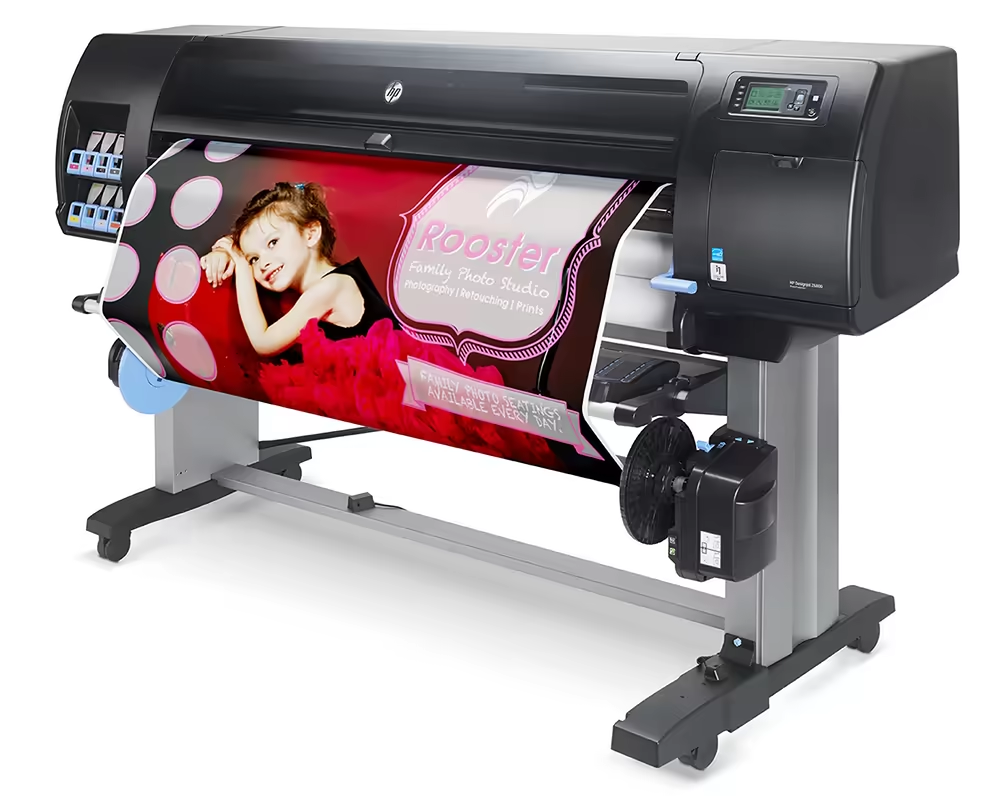So you got assigned a poster project for school. Maybe it's for a science fair, history day, or just a cool book report. And your teacher mentioned something about using the "poster printer" in the computer lab.
Sounds kinda scary, right?
But it's actually not that bad!
I've helped tons of kids figure out these machines, and yeah, they can be tricky sometimes, but once you get the hang of it, you'll be making awesome posters in no time.
Getting Ready: What You Need Before Printing
Before you even think about heading to the printer, you need to get some stuff ready. Trust me, this will save you a lot of headaches later.
You'll need:
- Your poster design (made in PowerPoint, Google Slides, or whatever program your school uses)
- A USB drive to transfer your file (unless your school has everything connected to the cloud)
- Permission to use the printer (most schools require a teacher's approval)
- Some basic knowledge of the computer that connects to the printer
Using a poster printer machine can make your school projects look professional and vibrant, helping you create large, colorful posters that really stand out in your classroom.
The most important thing is making sure your poster is the right size. Most school poster printers work with specific dimensions. Ask your teacher what size your poster should be - usually it's something like 24 × 36 inches or 36 × 48 inches. If you make your slide that size from the beginning, you won't have weird stretching issues later.
Oh, and check if your school charges for poster printing. Some places make you pay a few dollars to cover the cost of the special paper and ink. Nothing worse than getting all ready to print and then finding out you needed to bring money!
Step-by-Step: How to Use a Poster Printer
OK so you've got your poster designed and you're ready to print. Here's what to do:
- Save your file correctly. Most poster printers work best with PDF files, so save your design as a PDF. If you made it in PowerPoint or something, go to "Save As" and pick PDF from the dropdown menu.
- Get your file to the right computer. This is usually a specific computer in the library or computer lab that's connected to the poster printer. You might need to bring your file on a USB drive or log into your school account if your files are stored online.
- Open the file on the computer connected to the poster printer. Check one more time that everything looks good - all your text is readable and images aren't blurry.
- Find the print option. Click "File" then "Print" just like a normal printer.
- Select the poster printer from the list of printers. It might have a special name like "HP DesignJet" or "Epson Large Format" or just "Poster Printer."
- Check the print settings. Make sure the paper size matches your poster size. You usually don't need to mess with the other settings, but if someone changed them before you, you might need to reset them.
- Hit print! But wait nearby - these printers are slow and sometimes they get stuck. A typical poster might take 5-10 minutes to print.
- Be super careful when taking your poster off the printer. The ink might still be a little wet, and the paper can tear easily. Some schools have a special table where you should lay your poster flat to dry.
Tips for Making Your Poster Look Awesome
Now that you know the basics of printing, let's talk about making your poster actually look good. Because let's be honest, a lot of school posters end up kinda boring.
#1. Colors matter a lot. Dark backgrounds with light text might look cool on your computer screen, but they use up a ton of ink and sometimes look muddy when printed. Lighter backgrounds with darker text usually work better.
#2. Don't go crazy with fonts. Stick to 2-3 different fonts max. One for titles, one for regular text, and maybe one for special stuff. And make sure they're big enough! Your text should be readable from at least 3 feet away.
#3. Images should be high resolution. If you grab pictures from the internet, they might look fine on your screen but end up all pixelated when blown up poster-size. Try to find larger images or use ones you took yourself.
#4. Leave some empty space. Your poster doesn't need to be crammed full of stuff. Empty space (what designers call "white space") helps people focus on the important parts of your poster.
#5. Add a border. A simple colored border around the edge of your poster makes it look more finished and professional.
Common Problems and How to Fix Them
Ugh, the printer jammed again! Yeah, that happens. Here are some common problems and what to do about them:
1) Paper jam - Don't try to fix this yourself! Find a teacher or librarian. These printers are expensive and delicate.
2) Colors look weird - If your bright blue ocean turned out greenish-brown, the printer might be low on blue ink. Ask if anyone can replace the ink cartridge.
3) File won't open - Sometimes the computer connected to the poster printer doesn't have the same programs as the computer you used to make your poster. That's why saving as a PDF is so important - almost every computer can open PDFs.
4) Printer says "error" - Turn it off and on again. No, seriously! This fixes printer problems surprisingly often. If that doesn't work, find an adult who knows the printer well.
5) Your poster is too big or small - You might need to adjust the "scale" in the print settings. 100% means print at actual size. If your poster is coming out tiny in the corner of the paper, the scale might be set too low.
Fun Ideas for School Posters Using a Poster Printer
Now for the fun part! Here are some cool things you can do with poster printers that make your project stand out:
Make a comic strip style poster with frames showing the steps of a process or telling a story. This works great for history projects or explaining scientific methods.
Create a "Did You Know?" poster with surprising facts about your topic arranged in little bubbles or clouds all over the poster.
Design an infographic that uses pictures and short bits of text to explain something complicated. Infographics are those cool posters that use charts, icons, and visuals to share information in a super clear way.
Make a movie poster style project where you treat your topic like it's a blockbuster film. This works especially well for book reports - imagine your book as a movie!
Try a "choose your own adventure" poster where viewers follow different paths based on questions. This can be awesome for science projects showing different outcomes of experiments.
Map it out with a giant detailed map as your poster background, with information placed at relevant locations. This works great for geography projects but also history, ecology, or even literature projects where setting is important.



